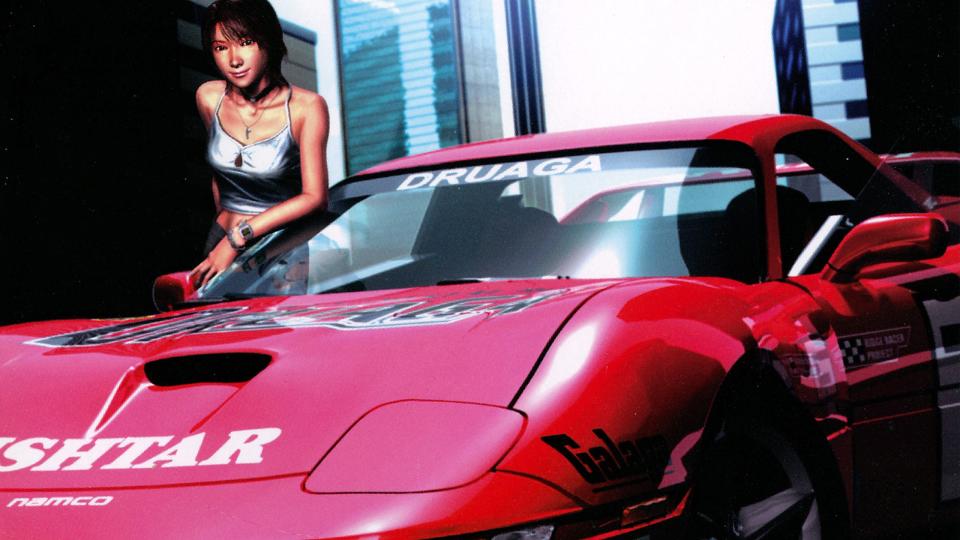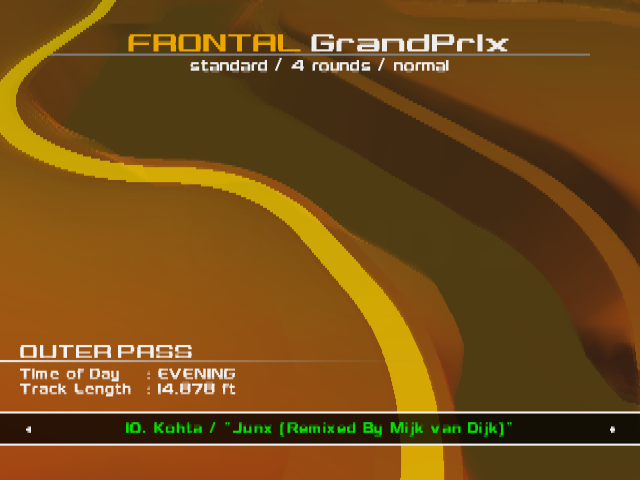All I Want for Christmas Is a Ridge Racer V Sequel

The gift-receiving aspect of Christmas doesn't do much for me these days, because I have pretty much everything I could reasonably want. But if I could ask Santa for anything, and he could make my wildest dreams come true the way he always seemed to when I was a kid, my request would be simple: I want a new Ridge Racer. Not only that, but it has to be a good one.
Look, I've thought about this for a long time. More than a decade, in fact, since the last mainline entry in Namco's arcade racing franchise released in 2011, for the PlayStation Vita. That's another loss I still haven't lived down; my sweet, OLED-powered boy, may you forever rest in peace.
I've been ruminating on what I'd wish for from a new Ridge Racer since I was a teenager, and cranking out mock UI and box art designs for an audience of no one. Recently, I set up my PS3 on my desk and powered it on for the first time in months. And rather than fire up Ridge Racer 7, I reached for the sapphire blue disc of Ridge Racer V because it legitimately is—and I don't just throw this word around with racing games—perfect.
If you're not familiar with the series, Ridge Racer's premise is simple: sanctioned street racing that is in no way realistic, built around drifting through sweeping highway roads over cities as well as picturesque mountain passes. The thing is, the driving itself has never been Ridge Racer's bag alone. The franchise was a technical tour-de-force, especially in its prime—which I would define as the late-PS1 through PS2 era. The first one, a launch title for the original PlayStation, delivered an experience near enough to arcade perfection that, at least in the mid-'90s, wiped the floor with Sega's attempt at bringing Daytona USA home for the troubled Saturn console.
https://youtu.be/SrBsVQLzB8g?si=dvotstt-mcPPU1EY\u0026t=26
As that generation continued and Namco succeeded in wringing out every drop of performance the OG PlayStation could muster, the ambition of its game design grew in kind. 1996's Rage Racer went for a completely unique visual and musical style and a carPG-esque approach to gameplay, two years before Gran Turismo launched in North America. But it was 1998's R4: Ridge Racer Type 4 that truly captured imaginations with its thoughtful world building, avant-garde graphic design, and perfectly-paired acid jazz soundtrack. R4 was the title that showed kid me that even games about driving cars could be artistic and emotional.
But as I said, my plea to Santa came to me as I was playing Ridge Racer V this week, and I think that's important to recognize. RRV was a little written off in its day. It launched alongside the PS2, and its rather pixelated appearance—a consequence of the way games (and especially early games, at that) on the platform were rendered that we won't get into here—didn't help things. Nor did its rather old-school approach to interactive racing, at a time when the promise of Gran Turismo 2000 was looming large.




But looking back, Ridge Racer V was arguably the zenith of the arcade racing genre. It sure felt smaller than its predecessor, R4, but it traded that reduction in scope for a massive investment in detail. RRV fleshed out Ridge City, the fictional venue in which the very first game's track was set. It revealed new paths, took you to mountains, across rivers, and on highways that you could only see far in the distance before, and did so with the enthusiasm, attention to detail, and unique sense of cool that was so typical of Namco's releases around this time.
https://youtu.be/C4PgHJq4-1Y?si=63QIHTK0Jpt8GqTS\u0026t=306
It also played and especially handled like an absolute dream. RRV boasts a core roster of but six cars, before you get into the weird and wonderful special models that reveal themselves late in the game. Three opt for a classic drifty cornering bias, like Ridge Racers of yore, while the remaining half are "grip" cars that have a tendency to shimmy a little through turns before biting down, but never kick the tail out quite as brazenly. Each handles vastly different from one and another, which certainly couldn't be said for the 300-plus machines in Ridge Racer Type 4, most of which were just different bodyshells and liveries placed over cars that functionally drove the same.

 Yahoo Autos
Yahoo Autos 